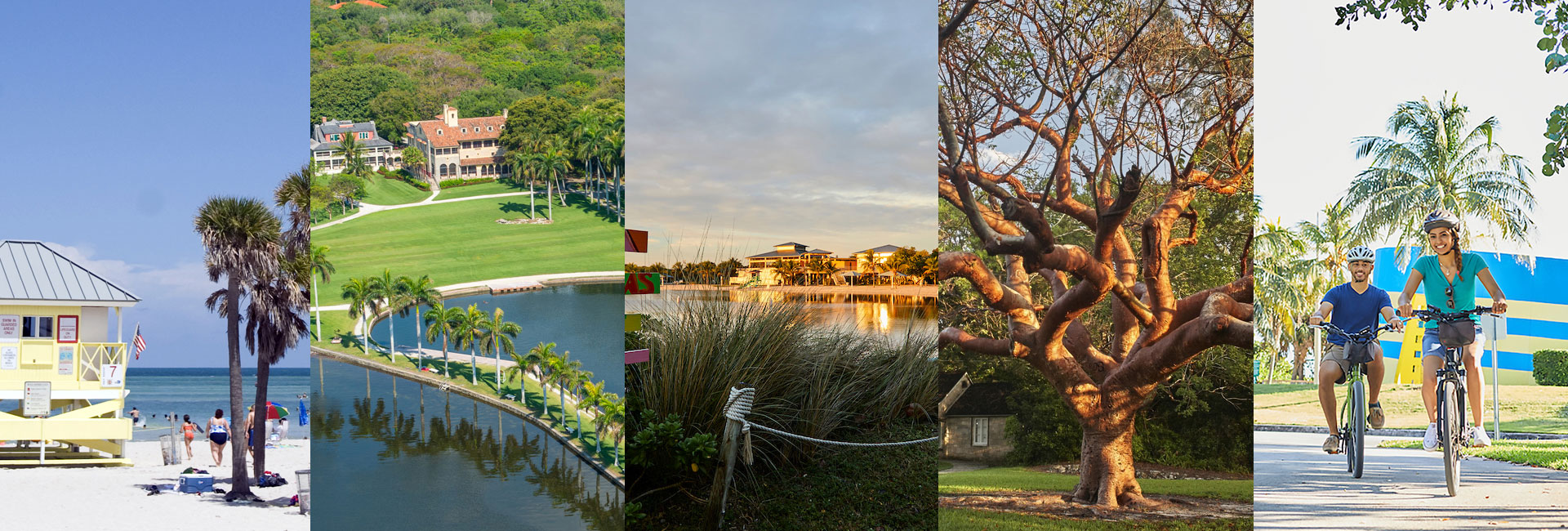Streets
For centuries, towns and cities were built for people: who walked, bicycled, took a trolley or a carriage to get around. In the 1940s, this all changed when the automobile transitioned from being a luxury item to an object within the reach of many household budgets. Soon cities were no longer built with the pedestrian in mind, but the car: streets were larger and made for speed, distances could be greater between destinations, and sidewalks were perceived to be unnecessary.
The legacy of this revolution is a harsh one: six-lane thoroughfares that even adults hesitate to cross, no shade trees, and one curb cut after another. The cars that enabled our cities to grow have also enabled our cities to grow more hostile. The good news is that it is possible to build pleasant, effective streets for many different modes of travel.
In fact, the Miami-Dade Parks Department began as a street beatification agency. By returning to its roots, the County can serve as inspiration for creating a great street approach to vision-based planning and design.
Focused on the redevelopment of existing arterial and collector roads, the Great Streets Vision promotes urban form and identity, improves aesthetics, provides for bicycle and pedestrian safety and comfort and enhances the social, physical and economic environment for land uses along the corridors.
To achieve this vision, Miami-Dade must look beyond performance-based street designs oriented to vehicle carrying capacity and consider the larger role that streets have in the public realm. Certainly it is difficult to give a precise definition of what makes a street "great," but we recognize when a street makes a broad and meaningful contribution to the quality of our urban environment, for movement as well as for place making.
Planning Principles
Miami-Dade County has the opportunity to embrace new design philosophies that integrate both transportation planning/engineering and land use planning principles to develop street designs that accommodate all users of a roadway.
By creating a context for both design criteria and land use interaction for streets, improvement projects must consider how people move and interact within the street space and not just how vehicles travel between points in the network. Creating Miami-Dade's great streets with the combined philosophies of multimodalism and context-sensitive design can lead to streets that:
- Function well within the context of adjacent land uses.
- Serve multiple functions.
- Serve users of all modes of transportation.
- Support a high mobility index, not just high level-of-service for vehicles.
- Are walkable and livable.
- Are complete in their form and function.

Parks, Recreation and Open Spaces
Maria I. Nardi
Hickman Building
275 NW 2nd Street,
Miami, FL 33128
305-755-7800

